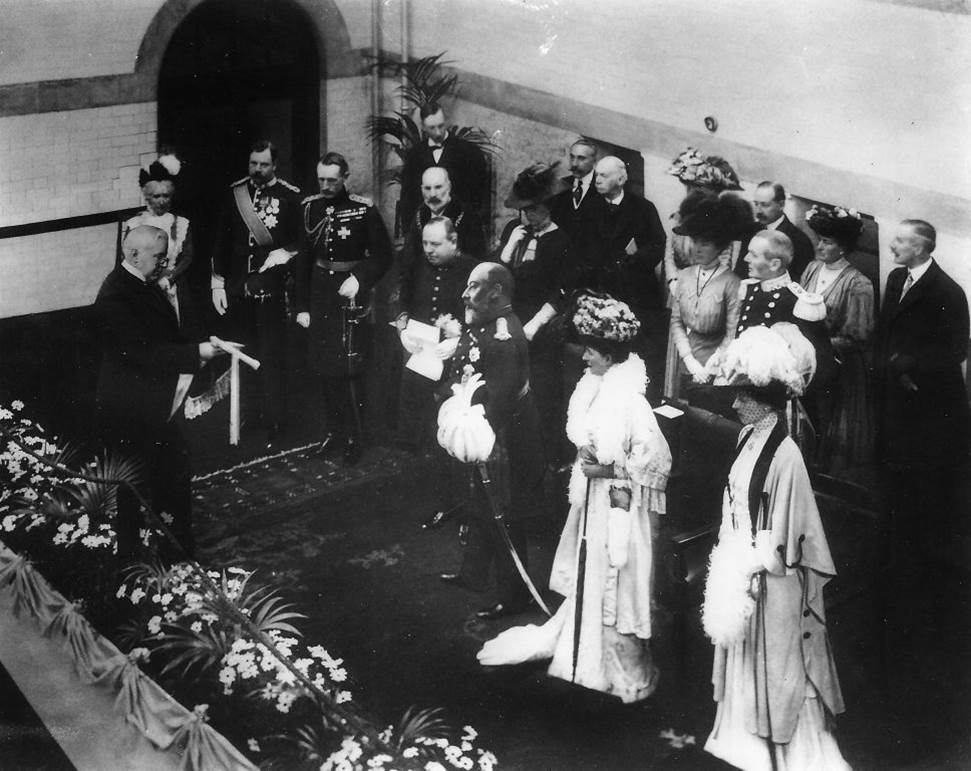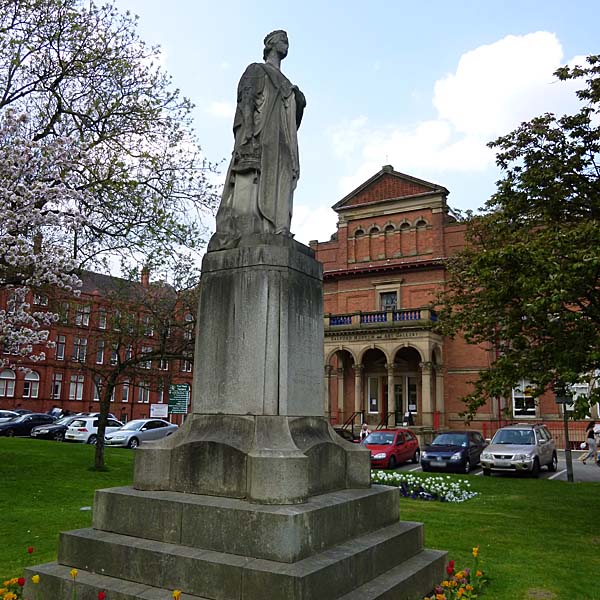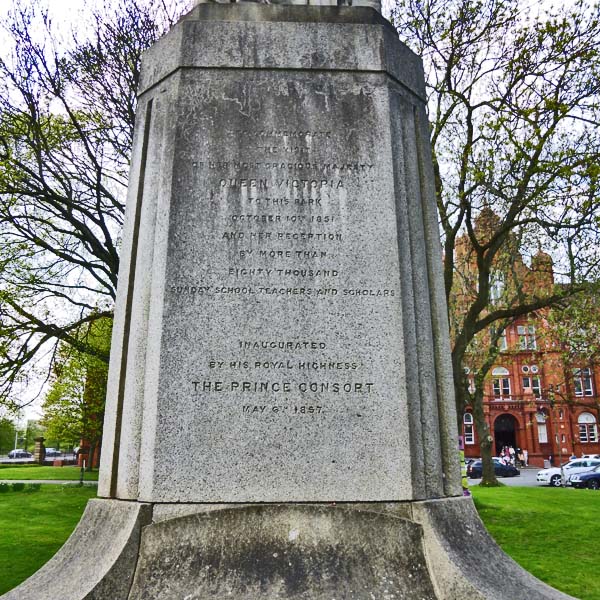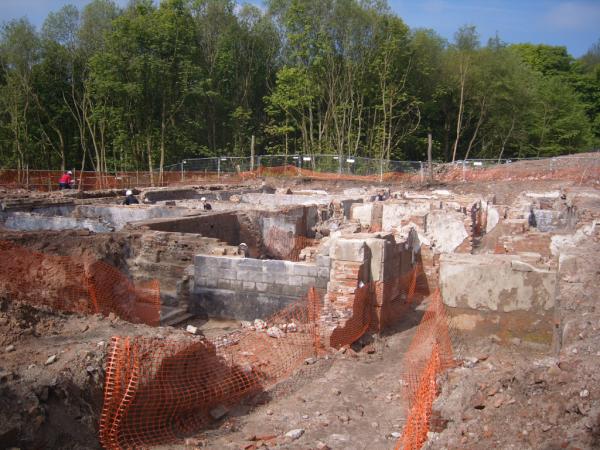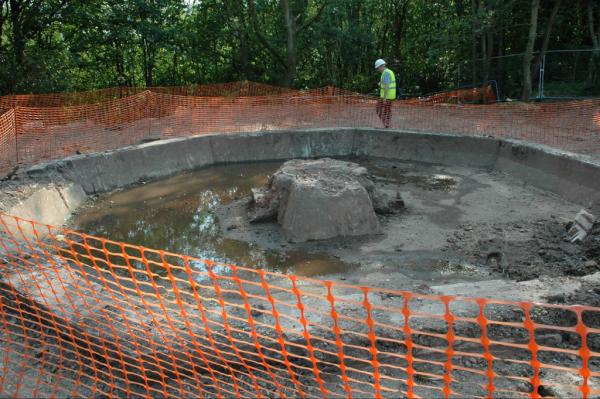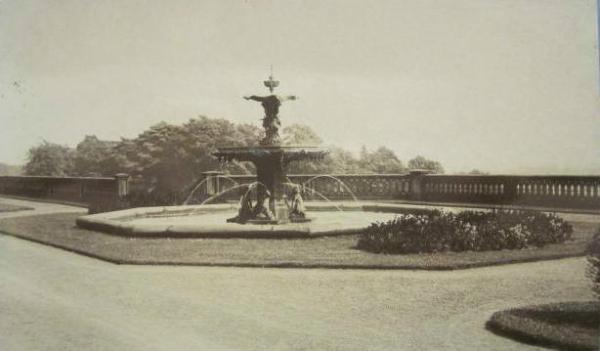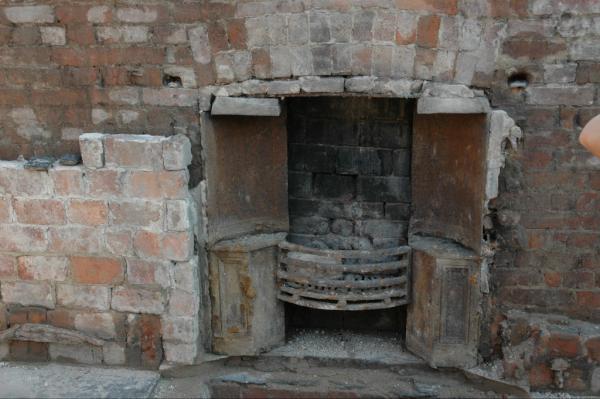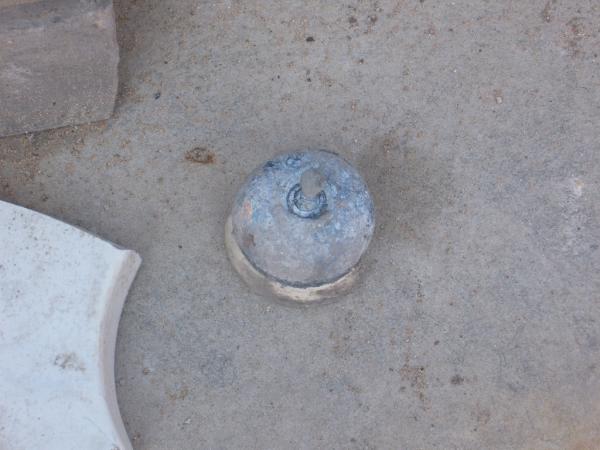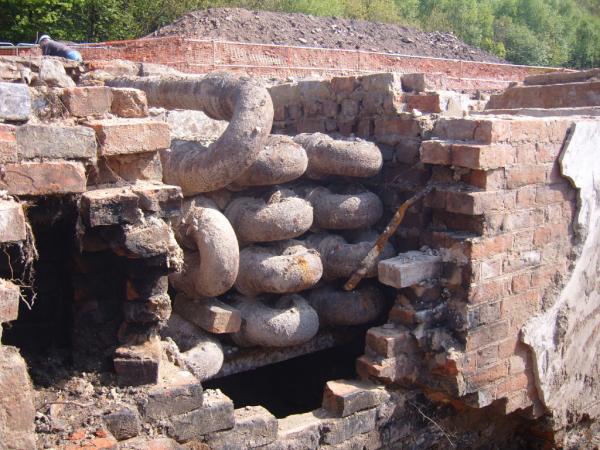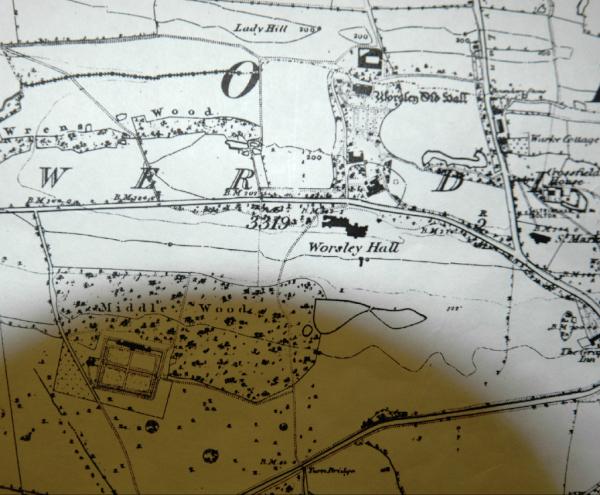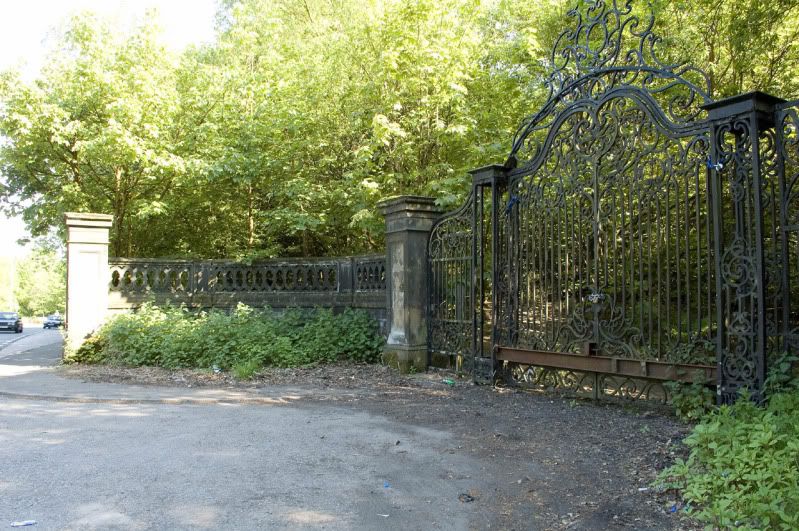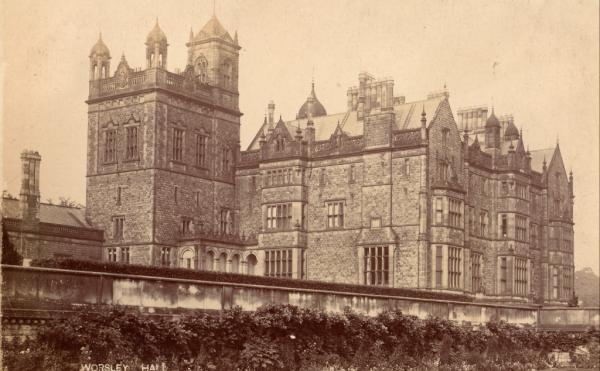Queen Victoria visited Worsley New Hall for a second time in June/July 1857. Her visit coincided with her visit to the Manchester Art Treasures Exhibition
at Trafford Park.
Manchester Art Treasures Exhibition, May 1857 - October 1857
Her Majesty travelled from the New Hall to the Exhibition by horse
and carriage, going through Worsley, Swinton and Pendleton.
The Manchester Art Treasures Exhibition is the largest art exhibition ever to be held in the UK, with over 16,000 works on display.
Back at the New Hall, the Queen planted a North American giant
redwood tree on the lawn in memory of the Duke of Wellington who had
died in 1852.
Queen Victoria's diary entries:
Monday 29th June 1857
Arriving at Worsley New Hall:
'Stopped at Tamworth, for a light
dinner, going on again at 8, reaching Patricroft station at 10.20. Young
Lady Ellesmere and her youngest brother-in-law, received us there. Lady Ellesmere, and family party, Lady Blanch, Lady Alice & Mr Byng, Lord Cawdor, the Evelyns and Balfours at Worsley. On arriving had supper for ourselves & children in our rooms, — the same we occupied in 51.'
Tuesday 30th June 1857
The Queen visits Manchester Art Treasures Exhibition:
'Dull morning, & rain in the night. — Breakfast early & started for Manchester, at 9, with our whole Party (the Ellesmeres excepted, he, being unwell)... Did not reach the Exhibition till ¼ p. 11,
going all through the town. Most enormous crowds, more than I ever saw
before, enthusiastic began belief, with such kind & friendly faces.
The streets beautifully decorated with flowers, flags & draperies,
Triumphal Arches, and endless kind & appropriate inscriptions. So
much affection displayed towards my beloved Albert, — so many kind allusions to Vicky & Fritz. One inscription ran thus: "Albert,
the Patron of Art, & promoter of Peace." There must have been ½ a
million of people out. The Exhibition is much in the style of the Dublin
one, only much larger, — & it was very full.'
Lord Ellesmere is in bad health:
'Returned as we came, & had
much rain, but all the people out, just the same. — No one, but those
in the house, to dinner. Sat between Lord Ellesmere, who took me in, and Fritz. A pleasant family, but he, poor man, has such bad health.'
Wednesday 1st July 1857
Second visit to Manchester Art Treasures Exhibition:
Again dull & cold. — Breakfasted in a small Library... Off to Manchester
at 10, as yesterday, but not in state, though, of course, with an
Escort. Went straight to the Exhibition, a short way. It was entirely
empty. Examined all the splendid works of art, in cases, in the nave:
specimens of ivory & wood carving, China glass, enamels, ornaments,
& relics of all sorts & kinds, then, the most interesting
portraits...'
Queen Victoria visits her statue:
'At 2,
I left with the girls & Ladies, driving back, through the Peel Park, Salford, and stopping there, to look at my statue.'
Here is a photograph of the statue:
Back to Worsley New Hall to plant trees:
Albert, Fritz, and co — had gone to the mansion House, to receive an Address. — Walking and drawing with Vicky, the Dss of Sutherland & Lady Ellesmere, 1st, planting trees. So much done for the County and population by the late Lord Ellesmere. When we came in, found the Princess returned, and all had gone off very well. — Dinner as yesterday. Lord Ellesmere, pleasing & well informed, so are the whole family, & fond of all intellectual pursuits.'
















